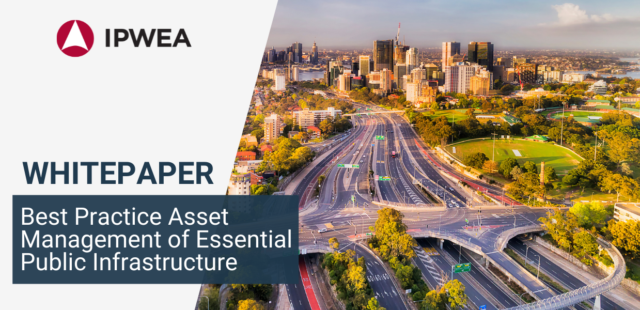By David Jenkins
Late last year, when IPWEA began developing a whitepaper on Australia’s infrastructure challenges and how they could be addressed, the media’s attention was rightly fixed on COVID-19’s fourth wave. Weather and climate barely rated a mention.
Fast-forward to today and many of us are still drying out after an exceptionally humid summer.
There was flash flooding in QLD, record-breaking rainfall in Sydney and unprecedented overnight warmth in Melbourne – a stark contrast to the dry heat of 2020. The weather caused transport disruption, triggered power outages, and prompted emergency calls from coast to coast.
By itself, Australia’s increasingly wild weather will undoubtedly continue to strain our public works infrastructure. But, as we know, the weather is not the only issue to contend with.
Our councils face a skills shortage of ever-growing proportions, particularly in municipal engineering, putting the ongoing management of assets in doubt. And the Federal Government is pressing ahead with major infrastructure projects despite the lack of labour.
Given these challenges, it seems extraordinary that there is currently no co-ordinated national strategy for education and skills development in asset management.
It makes IPWEA’s whitepaper, Best Practice Asset Management of Essential Public Infrastructure, even more timely now than it was a few months ago.
The whitepaper argues investing in asset management can deliver better returns on infrastructure investments and improved outcomes for communities. It also explains how asset management capability can be integrated into existing organisations.
Most importantly, it lays out a six-step action plan that could allow Australia to meet the infrastructure challenges it currently faces and safeguard our public assets for decades to come.
These are our recommendations:
1. All levels of government should commit to the rollout of educational programs designed to raise asset management capability and practice. An industry-wide uplift in asset management capability would improve the value proposition for investing in infrastructure.
2. Federal, State and Territory governments should re-activate the ‘Local Government Financial Sustainability – Nationally Consistent Frameworks’ agreement. This would improve investment decisions, demonstrate compliance, and improve services, outputs, and efficiencies.
3. The Federal Government should require a certain level of proficiency in asset management practice, based on the above framework, when granting infrastructure funding to state, territory, and local governments.
4. State and territory governments should audit local governments’ long-term financial plans to ensure they align with asset management life-cycle forecasts.
5. Local governments should be required to report on the state of their infrastructure using a nationally accepted methodology. This reporting should be an input into applications for needs-based Federal Financial Assistance Grants to local government.
6. Asset management must be recognised by Australia’s government and public service sector as a vital profession requiring formal qualifications aligned with global standards. Further legitimising asset management will encourage more young Australians to pursue it as a career.
That final recommendation also serves as a summary of the entire whitepaper. We explain, in clear language, 1) why asset management is so important, and 2) how recognising its importance is the key to safeguarding our infrastructure long-term.
I urge you to read the whitepaper which was released February 28 and share it widely. Researchers and municipal engineers around the world agree asset management is critically important, but a lack of recognition in Australia is hobbling our progress.
We must all continue to spread the word.














